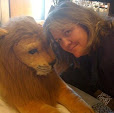Ragtime, by E. L. Doctorow was the talk of the 70's. Published in 1975, it was a best seller and, I didn't know it at the time, considered innovative, even revolutionary.
I didn't read it when it first came out--then, as now, I eschew best-sellers, with the still misguided notion that what the masses like can't be good. However, I have heard for years that it's a wonderful novel, so I put it on my TBR Pile Challenge list and finally read it.
I liked it--found it interesting, taking place in very early 20th century New York City, a time and place I particularly like reading about. Doctorow has a fine vocabulary and I found myself reaching for my smart phone many times to look up a word, or a place, or a person.
After I finished it, I did a bit of reading about the book--while good, I was curious as to why critics back in the 1970's found it innovative. I found it fairly routine in technique. What I learned is that Doctorow was one of the first, if not the first, novelist to blur the lines between fiction and real-history, including in his cast of characters real people, such as Henry Ford, J Pierpont Morgan, Evelyn Nesbit, and Harry Houdini, among others. His fictional characters, many of whom are unnamed but labeled (i.e., Father, Mother, Younger Brother), interact freely with historical characters. Doctorow creates scenes and circumstances that might have been but that history didn't record.
I was surprised to learn that this was innovative in the 1970's. It is such a mainstay of historical fiction these days--but weren't Gore Vidal and James Michener doing this already? Maybe somebody can enlighten me as to the difference between Burr and Centennial and Ragtime, with regards to blurring the lines between fiction and history.
Doctorow did such a good job with his character and story line around Coalhouse Walker, the black jazz pianist who ends up holding Morgan's library hostage, that I had to search the internet to determine whether he was a real historical person or not. It turns out not--but Coalhouse and his story were lifted by Doctorow from a German novella entitled Michael Kohlhaas by Heinrich Von Kleist and published in 1808--the Kleist work was itself a reworking of a 16th century story about Hans Kohlhase.
I liked the theme Doctorow presented that the 20th century was one centered around creating and exploiting reproducible experiences (e.g., Ford's innovation in the automobile industry was all around creating clones of the Model T cheaply and quickly). I liked extending this to character and thought it interesting that Doctorow wrote Ragtime during the part of the 20th century during which young people sought to find themselves, express their uniqueness and individuality, and not be part of the cookie cutter suburbia that their parents embraced so warmly.
Here are a couple of articles I found particularly interesting and informative.
Based on a True Story, On Critics and Criticism
'Ragtime' Evokes Real and Fictional Pasts, New York Times (about the 1981 movie, but still relevant to the book)
Hey! Grandpa Was Right-Doctorow Stole Ragtime, New York Observer
Now I'm eager to see the movie as well as the stage musical.



I too am really apprehensive about bestsellers.
ReplyDeleteI am a little uncomfortable with the entire concept of books that mix historical reality with fiction. With that said I do recognize that such a concept can yield great results.
I too am a little confused regarding Doctorow's role in creating this concept. This really does not seem like the first book to do this.
I addition to the authors that you mention I am thinking about Victor Hugo's Ninety-Three.
I think I mentioned to you before how much I loved this book - and I think part of it was because it was so unique (although I think I read Michener shortly after that did much the same thing). It really was the first time I read a book that made me go look up the truth. Twenty-five years later it still stuck with me enough for me to pick up American Eve Evelyn Nesbit, Stanford White The Birth of The "It" Girl & The Crime of the Century by Paula Uruburu.
ReplyDeleteYes, your love for this book inspired me to read it, Lisa. I think the Uruburu book will have to go on my TBR list as well.
ReplyDeleteInteresting that you mention Michener. I'm now reading his 1983 novel "Poland" (and loving it). Its table of contents are presented as an Explanation, chapter by chapter, of what is historical and what is fictional. I wonder if this is a legacy of the flap about "Ragtime" and its "innovative" blurring of reality and invention. It seems that a lot of historical novelists these days include a postscript trying to sort this out for the reader before they leave the historical fiction world with too many mistaken beliefs. I haven't read "Ragtime," but my impression at the time was that the performance aspect of the author's accomplishment was emphasized: taking fact and fiction, and mixing them up backstage, the author can put on a dazzling literary show.
ReplyDeleteI really like Michener--Poland sounds so interesting, and I like the format you describe. It could be the legacy of Ragtime--I see a lot of contemporary historical fiction writers not having any qualms about rewriting history to suit their narrative, which I find to be a real shame.
ReplyDeleteI'm also planning on reading March by Doctorow, and it'll be interesting to see whether his style as changed over the years.